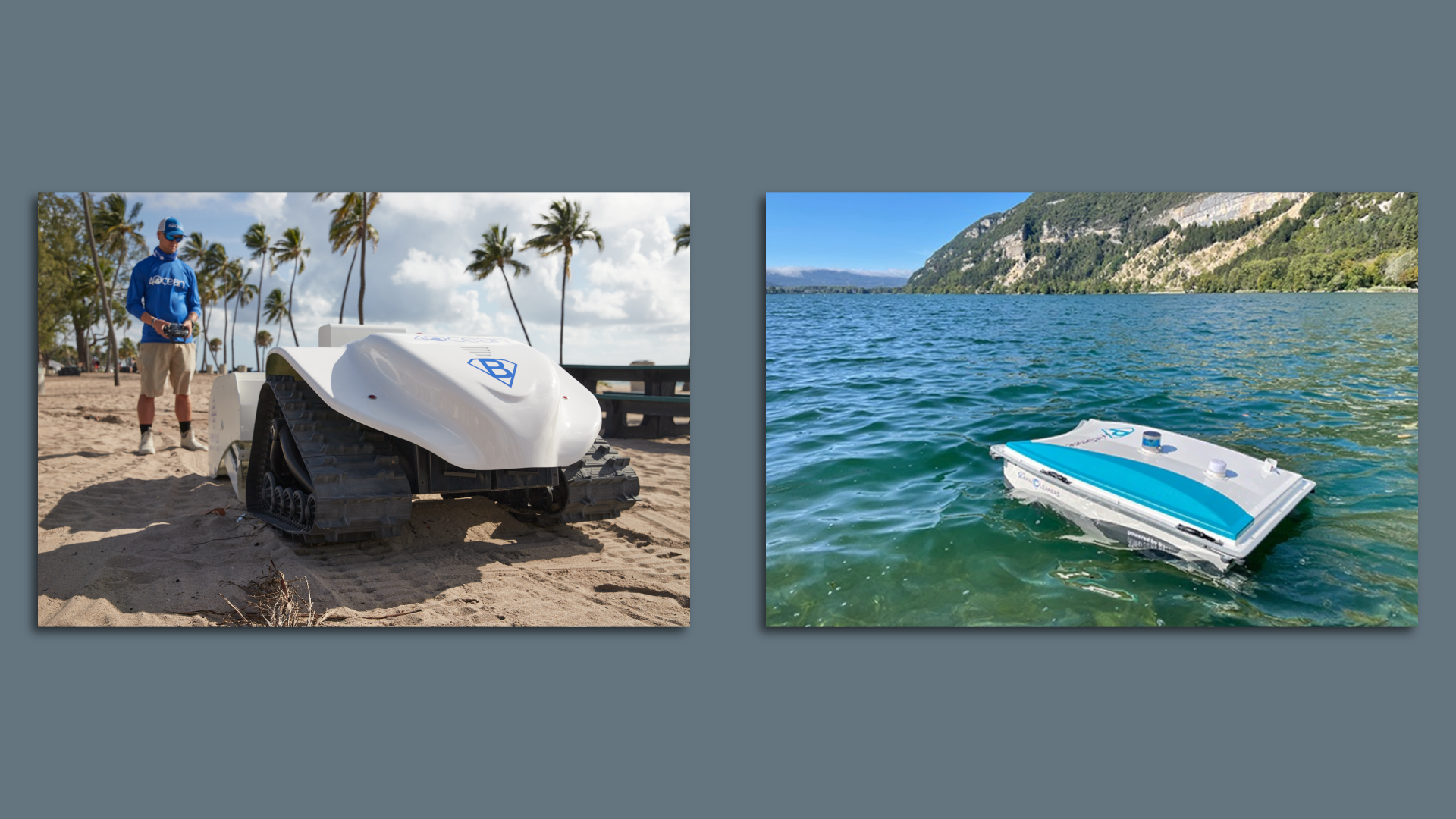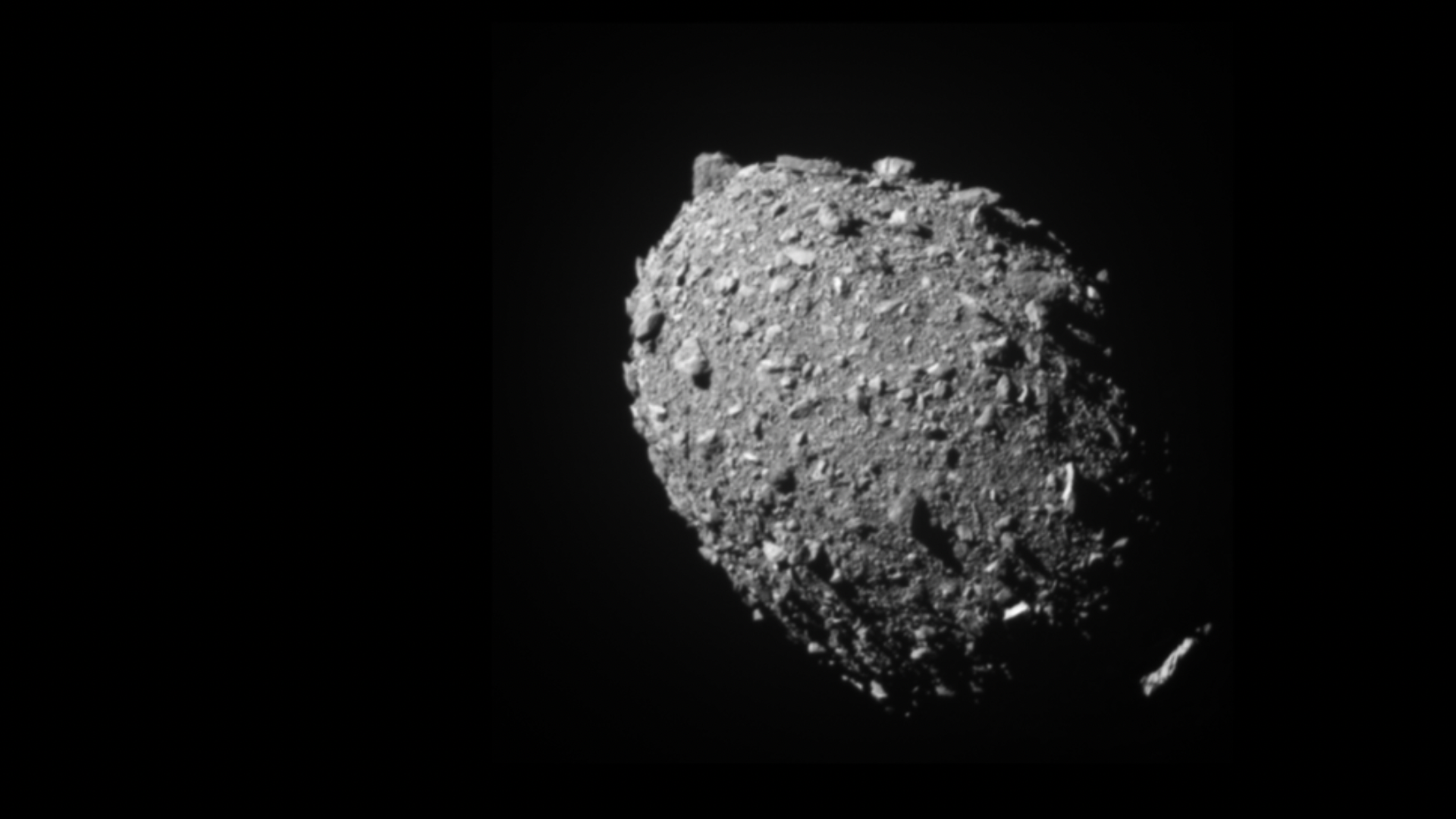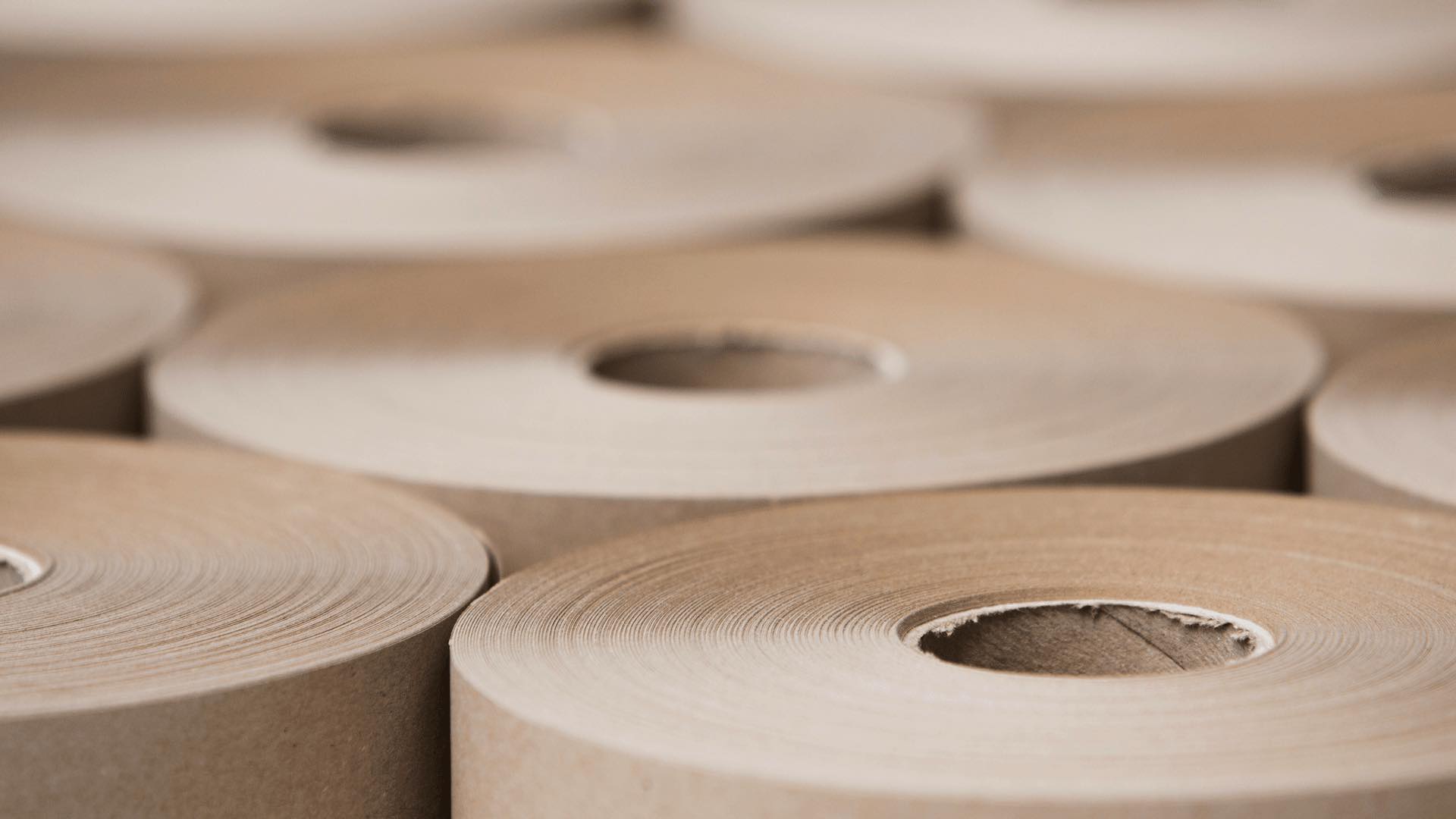| | | | | | | Presented By ADM | | | | Axios What's Next | | By Jennifer A. Kingson, Joann Muller and Alex Fitzpatrick · Sep 28, 2022 | | It's beach cleanup season — and as Jennifer reports today, all manner of robots, drones and other tech are helping out. Today's newsletter is 1,172 words ... 4½ minutes. | | | | | | 1 big thing: Beach cleanup goes high-tech |  | | | The BeBot, left, sifts through sand to remove plastic waste and other debris. The Pixie Drone, right, is a sort of Roomba for floating waste. Photos courtesy of Searial Cleaners | | | | Plastic-munching robots, floating drones and other "smart" contraptions are starting to ply beaches and waterways, systematically removing dangerous debris left by summertime revelers, Jennifer A. Kingson reports. Why it matters: Not only are these futuristic technologies highly effective in scouring the areas they patrol, they're also eye-catching novelties that focus public attention on the growing problem of plastic waste, particularly in oceans. Driving the news: A new generation of high-tech cleaning devices has been deployed to cull plastic, cigarette butts, cotton swabs and other trash from the Great Lakes, Lake Tahoe and select Florida beaches. - Running on solar or electric power, the emissions-free devices offer a newfangled alternative to the old-fashioned community trash cleanup.
The Great Lakes are at the vanguard of experimentation. Thanks to private donations, government grants and gifts like $1 million from Meijer supermarkets, a flotilla of cutting-edge contraptions has been deployed: - The latest are the BeBot, a $55,000 beach-sifting robot that collects the waste buried in a defined area, and the PixieDrone, a $33,000 floating Roomba that works autonomously or by remote control.
- Also in use are the Seabin (a floating trash bin for marinas), the LittaTrap (a catch basin that sits inside a storm drain) and the Gutter Bin stormwater filtration system — devices that cost between $700 and $10,000 each, said Mark Fisher, president and CEO of the Council of the Great Lakes Region.
"We certainly want to try and test out other technologies that might be out there," Fisher tells Axios. - "Each in their own right are very effective, but we also know that these technologies are not going to solve the larger problem, which is how do we forge a future without waste?"
Where it stands: The Great Lakes Plastic Cleanup is focused both on cleanup technology and raising awareness of the plastic waste problem. - Highly visible cleaning gadgets "are important for having those critical conversations with coastal communities and policymakers," Fisher said.
- When people see devices like the BeBot in action, it sparks their curiosity and gets them concerned about the issue — children in particular, said Melissa De Young, director of policy and programs at Pollution Probe, an environmental nonprofit.
What they're saying: "When our partners use our technologies, straightaway they have people coming to them asking about how it works," said Gautier Peers of Searial Cleaners, a French company that makes the BeBot and the PixieDrone. - "It's a great way for them to educate and inform families, especially kids, about the plastic pollution crisis," he said. "It convinces them to change their consumption habits as far as plastic is concerned."
- The BeBot has been used to clean beaches in South Lake Tahoe and all around Florida, raising awareness in those areas.
- Searial Cleaners also makes the Collec'Thor, a trash-trapping waste bin that sits at the water's edge, and InvisiBubble, a bubble curtain that captures small waste particles.
What's next: Peers acknowledges that the high cost of Searial's devices is a limiting factor, but says growing attention to beach and ocean pollution is helping galvanize governments, nonprofits, corporations and individuals. Share this story. |     | | | | | | 2. Look out for that sofa! |  | | | Illustration: Eniola Odetunde/Axios | | | | If you've ever swerved to avoid an obstacle on the highway, you'll understand why Aurora Innovation is teaching its self-driving trucks to be prepared for anything — including shredded tires or errant sofas, Joann Muller reports. Why it matters: Road debris is fairly common and can be dangerous, especially when vehicles are moving at highway speeds. - Nearly 37% of all deaths in road debris collisions result from the driver swerving to avoid hitting an object, according to a study by the AAA Foundation for Traffic Safety.
What's happening: The latest beta version of Aurora's self-driving truck tech, called Aurora Driver, is trained to identify and steer clear of debris on the road to avoid swerving collisions at highway speeds. - It can also navigate construction zones with temporary lane markings and identify vulnerable road users, such as cyclists and motorcyclists.
The bottom line: Autonomous vehicles have to share the road with other cars, cyclists and pedestrians, but also things that shouldn't be there — like a piece of furniture that fell off the back of a truck. What to watch: Aurora aims to launch fully driverless semi trucks by the end of 2024. Share this story. |     | | | | | | 3. Big interest in microcredentials |  | | | Illustration: Allie Carl/Axios | | | | Offering "microcredentials" that give students a way to show they have training in a particular skill makes them 75% more likely to enroll in a given academic program, per a new survey from education platform Coursera, Alex Fitzpatrick reports. Why it matters: Recent grads on the job hunt are often looking for ways to stand out, while employers want to separate the applicant wheat from the chaff. - 86% of employers say microcredentials improve job candidates' applications.
Driving the news: Microcredentials are a way for people to get training in high-demand disciplines, such as machine learning and cybersecurity, often while building toward a more traditional degree over time. - Coursera is working with companies like Google and Meta, as well as with universities like Boise State and Hawaii Pacific University, to develop microcredential programs.
- In May, Coursera added six new professional certificates that are "concentrated in the areas of information technology, web development, and software engineering and are aimed at preparing learners, even those who have no college degree or relevant work experience, for new careers in those fields," per Forbes.
For its study, Coursera surveyed 3,600 students and employers across eight countries. |     | | | | | | A message from ADM | | Addressing the urgent need for sustainable packaging | | |  | | | | ADM is building on 120 years of R&D to develop innovative paper and packaging solutions that are better for the planet. The reason: Almost everything we use and consume comes in packaging, so eco-conscious materials are vital to a sustainable future. Learn about ADM's packaging solutions. | | | | | | 4. 📸 Ian from space |  | | | Photo courtesy of NOAA | | | | Hurricane Ian is seen Tuesday morning as captured over Cuba by the National Oceanic and Atmospheric Administration's weather satellites. - Ian, a Category 3 as of Tuesday night, was forecast to strengthen to a Category 4 overnight as "catastrophic" winds and storm surge headed for southwest Florida, per the National Hurricane Center.
- One local energy utility, Duke Energy, recently invested in grid automation and "self-healing" technology that can detect outages and reroute power accordingly, Axios Tampa Bay authors Ben Montgomery and Selene San Felice report.
- Ian, which is likely to knock out power for many Floridians, will be a major test of those innovations.
|     | | | | | | 5. NASA bonks asteroid |  | | | Asteroid moonlet Dimorphos as seen by the DART spacecraft 11 seconds before impact. Photo courtesy of NASA/Johns Hopkins APL | | | | NASA deliberately crashed a spacecraft into a small asteroid Monday in an effort to change the object's orbit around a larger space rock, Axios' Jacob Knutson reports. Why it matters: The first-of-its-kind mission — called the Double Asteroid Redirection Test (DART) — was designed to test whether such technology could one day be used to defend the Earth from hazardous asteroids or comets by deflecting them off course. The big picture: No known asteroids are on a collision course with the Earth, and asteroid strikes are rare. - But if a large space rock were to hit a populated area, it could cause significant damage.
What's next: It will take weeks of observations to determine precisely the effects of the DART impact. Read the rest. |     | | | | | | A message from ADM | | Packaging for a more sustainable tomorrow | | |  | | | | ADM is aiming to make packaging more sustainable through innovative plant-based solutions. Why it's important: Environmental impact must remain a priority if we hope to achieve a more sustainable future. Learn how ADM is helping to reduce environmental footprints. | | | | A hearty thanks to What's Next copy editor Amy Stern. Was this email forwarded to you? Get your daily dose of What's Next by signing up here for our free newsletter. |  | | Are you a fan of this email format? It's called Smart Brevity®. Over 300 orgs use it — in a tool called Axios HQ — to drive productivity with clearer workplace communications. | | | | | | Axios thanks our partners for supporting our newsletters. If you're interested in advertising, learn more here.
Sponsorship has no influence on editorial content. Axios, 3100 Clarendon Blvd, Arlington VA 22201 | | | You received this email because you signed up for newsletters from Axios.
Change your preferences or unsubscribe here. | | | Was this email forwarded to you?
Sign up now to get Axios in your inbox. | | | | Follow Axios on social media:    | | | | | |










No comments:
Post a Comment